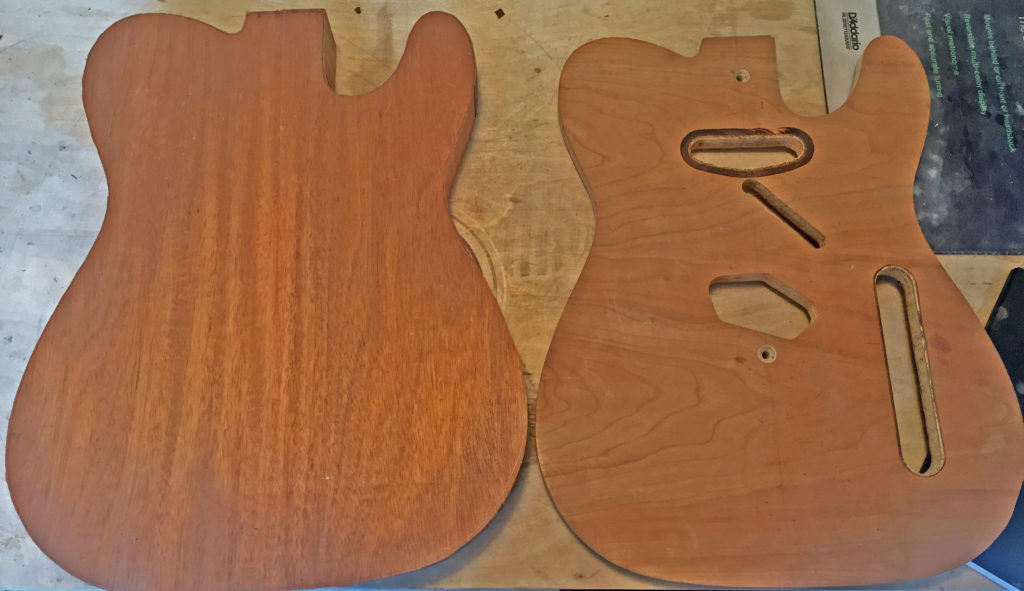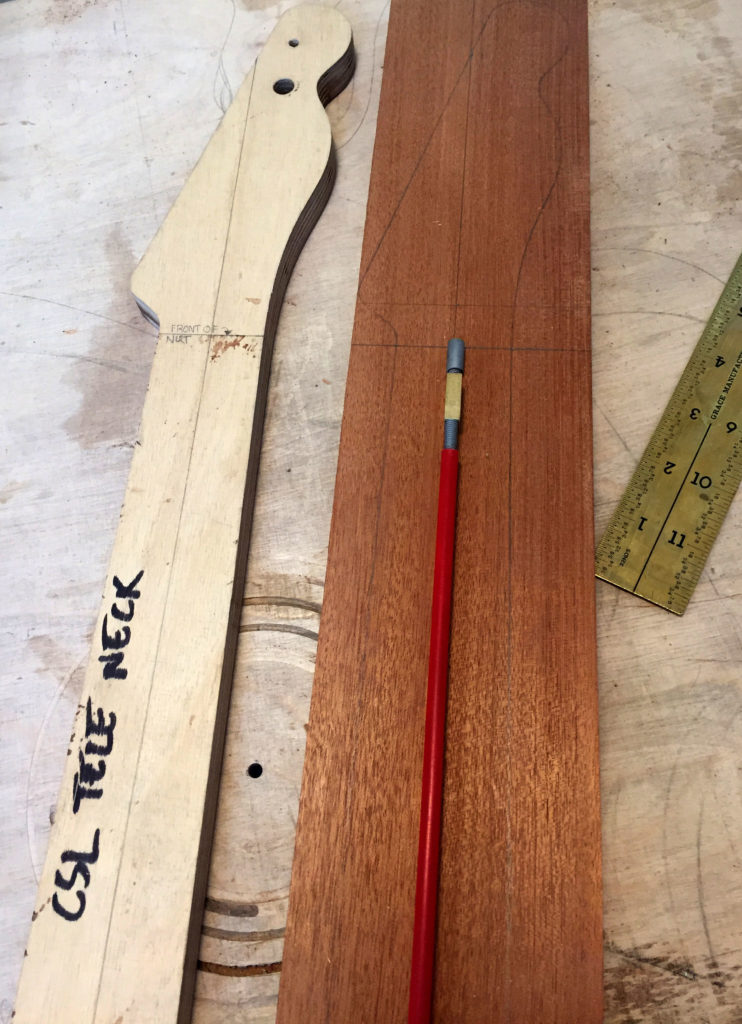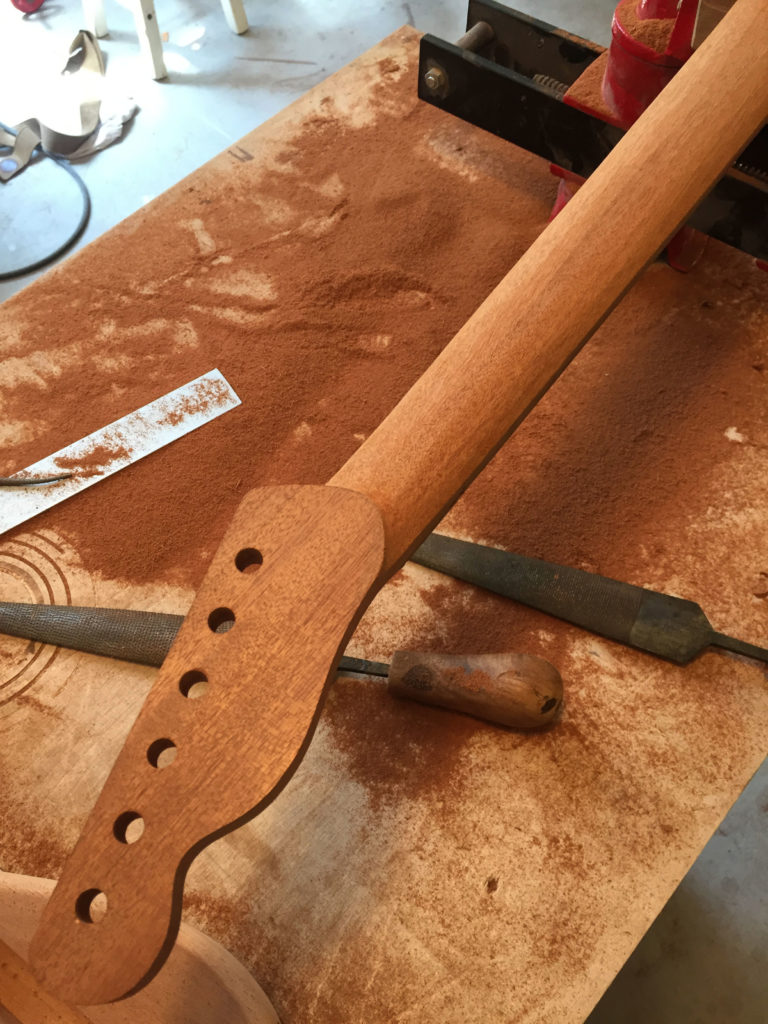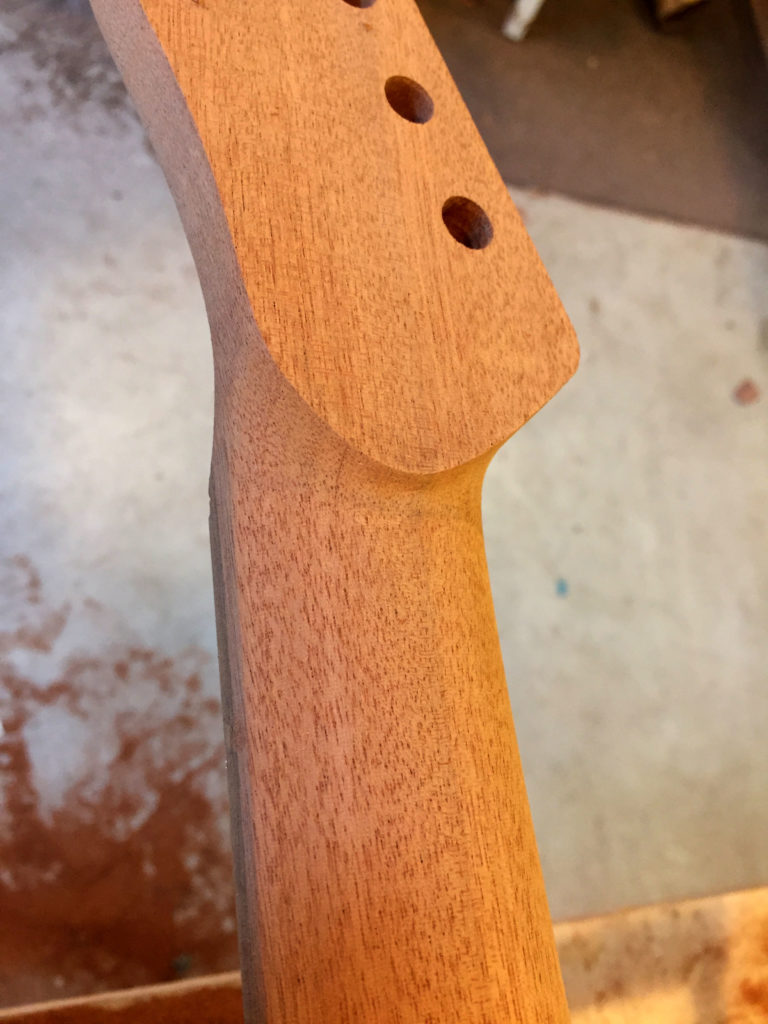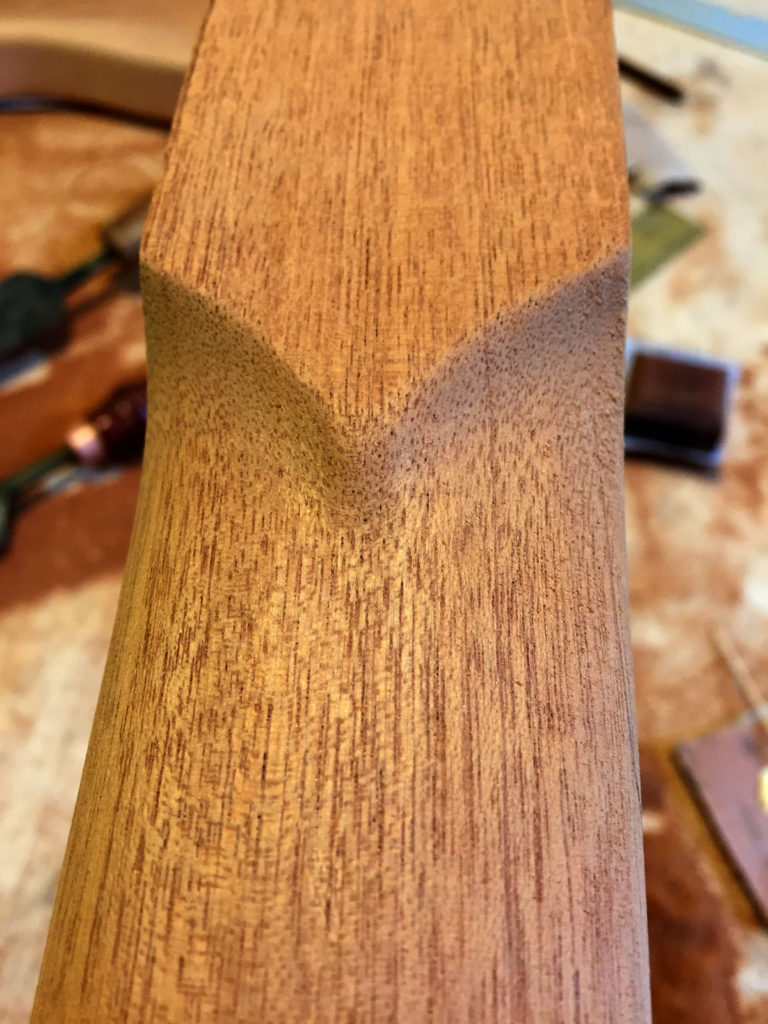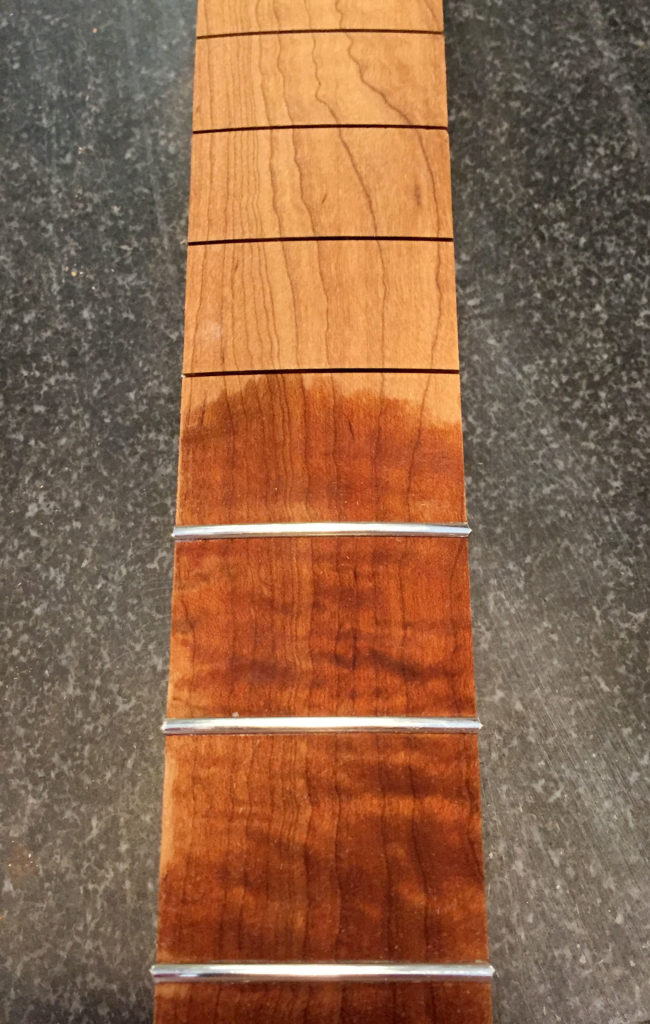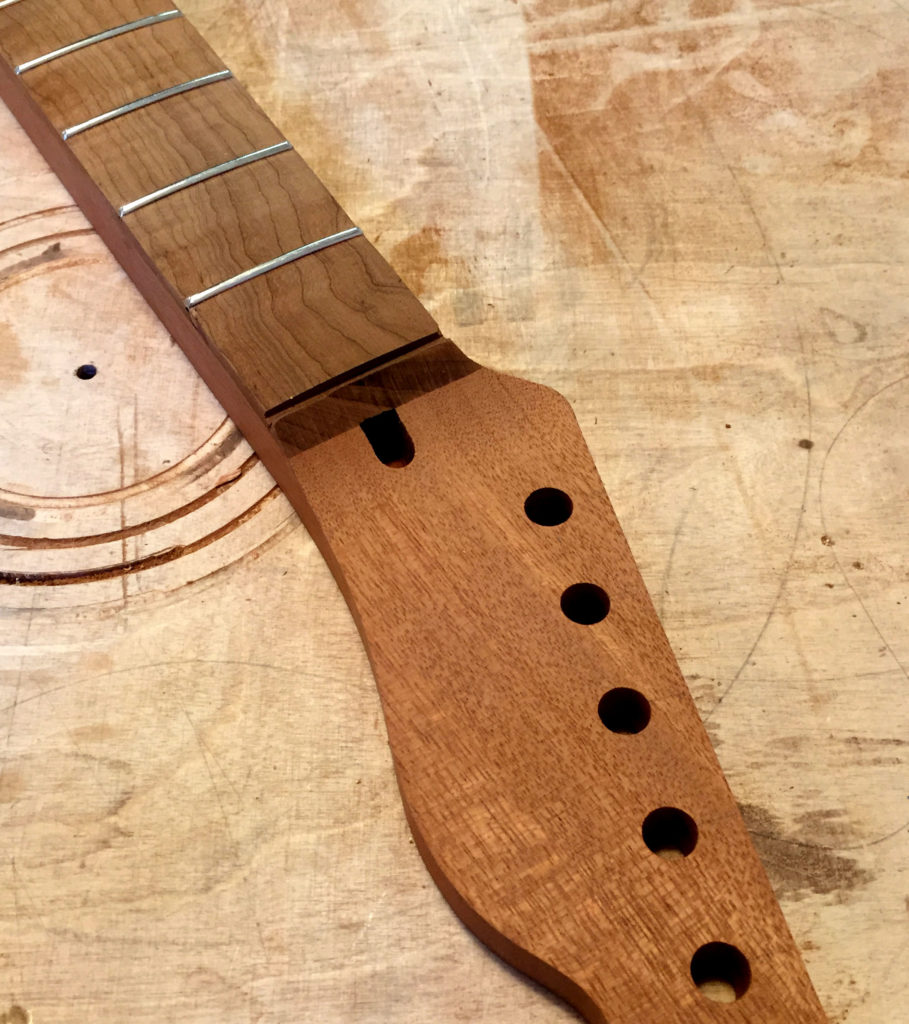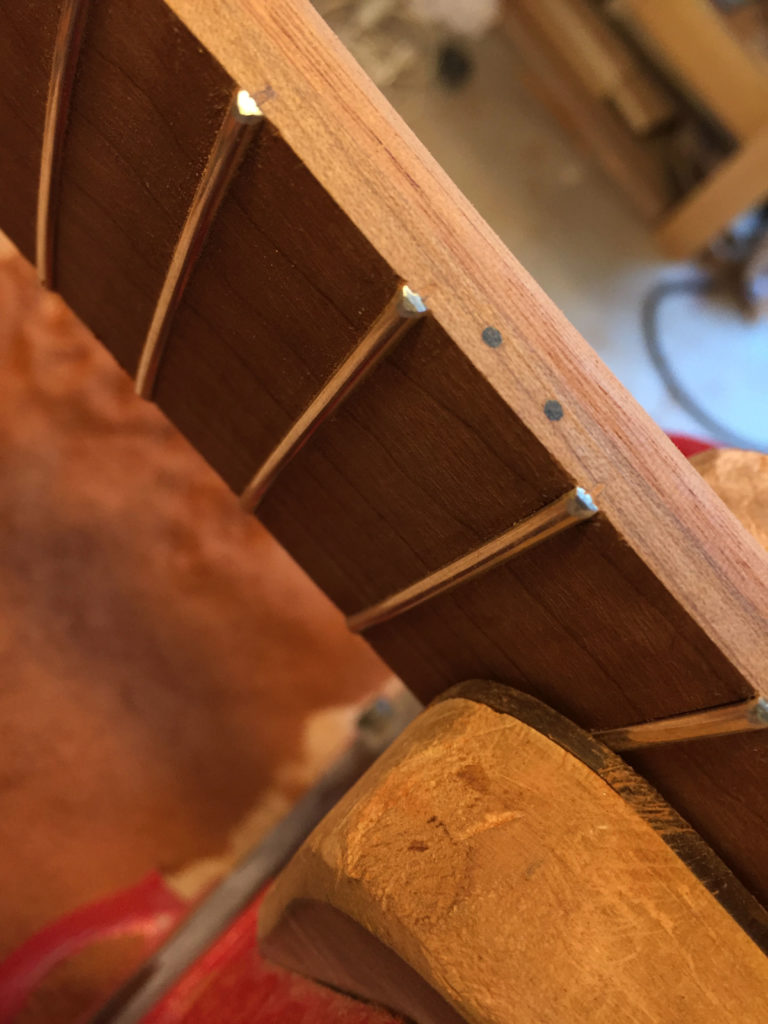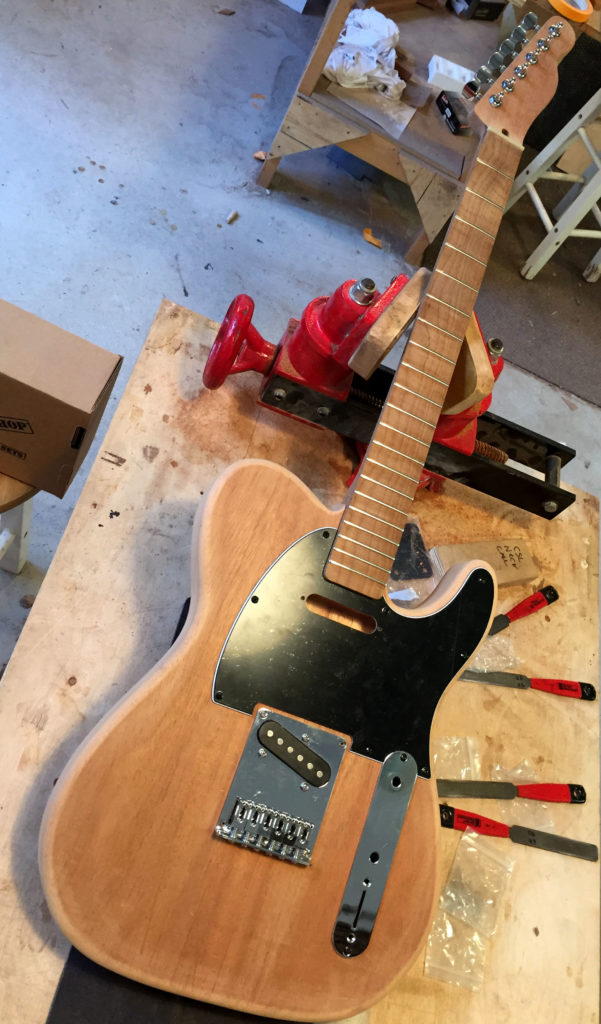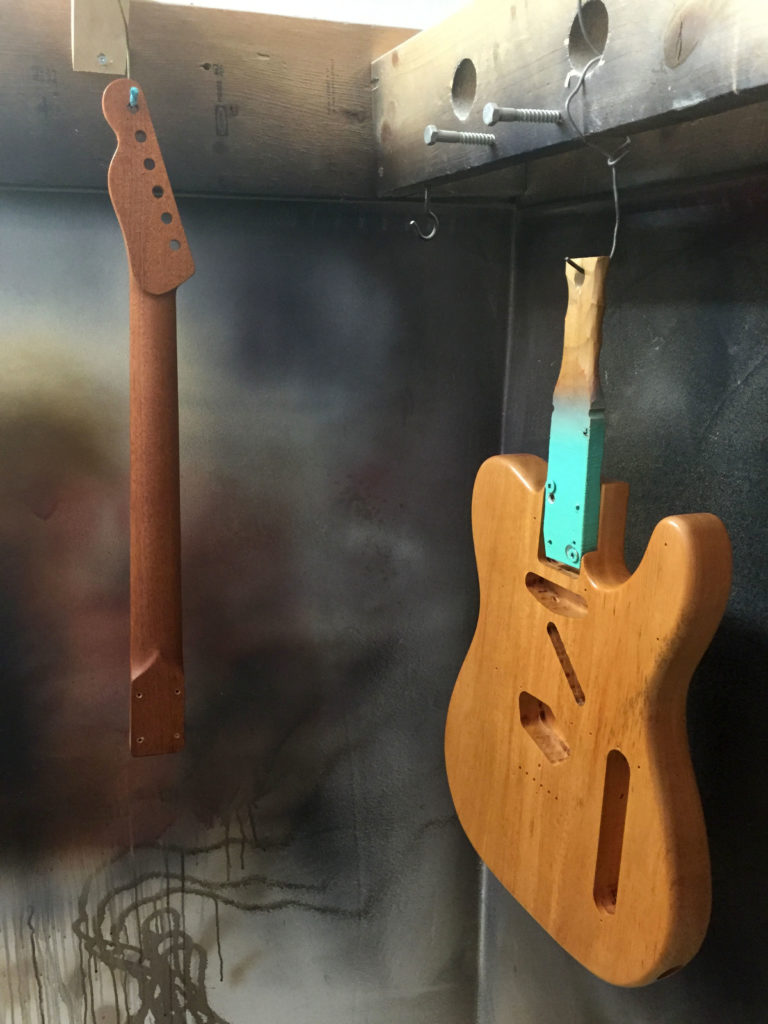Next stop: The Canadian School of Lutherie in Toronto. Guitars are made from wood, from what I can remember. Seems like a good next step. Templates and knowing where electronics go make this jazz a whole lot simpler.
The countless bags of metal do-dads and wires slowly started to make sense with each new hole I made in the Honduran mahogany body.
The neck stock was African mahogany with a torrified (roasted) maple fretboard.
The first step was sandwiching a truss rod between the fretboard and neck, with the help of a router, cutting out the shape, then the carving.
A couple good rasps are all you need.
Next step was cutting the frets. First on a table saw jig to get the proper spacing, then cleaned up by hand.
Fret time.
There’s a lot of grinding and clipping and glueing and hammering.
Pretty soon you start to realize you’ve made a freakin’ guitar.
The fret board looked too nice to sully with a lot of inlays, so I kept them just on the top of the neck.
A quick dry fit before the final sand and spray finish.
It was difficult to notice a difference between the two types of mahogany. Until that first coat of finish.
While that dried, I made a knob for the three-way switch out of the same torrified maple from the fretboard.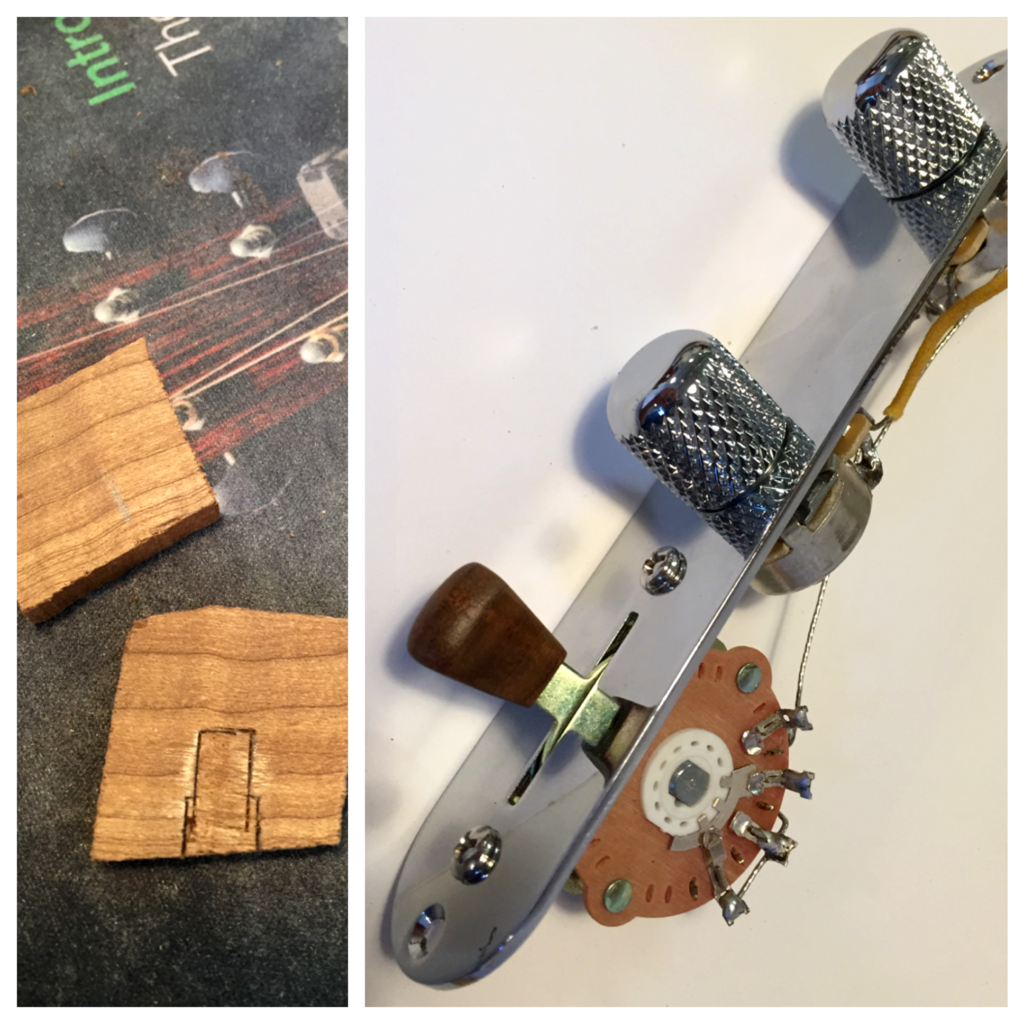 Apparently, solder is quite hot when it is a liquid. And bare wires shouldn’t touch for some reason. Who knew?
Apparently, solder is quite hot when it is a liquid. And bare wires shouldn’t touch for some reason. Who knew?
Having no idea how guitars should sound, but it seems like it sounds pretty great.
Now I need to learn how to play it.


